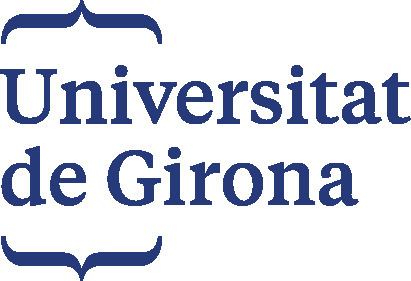Rector Sergi Bonet Undergraduates 12067 Phone +34 972 41 80 46 Founded 12 December 1991 | Established 1446 Students over 15,000 Postgraduates 835 Total enrollment 15,309 (2014) | |
 | ||
Similar University of Barcelona, Autonomous University of Barcel, Open University of Catalo, University of Lleida, Pompeu Fabra University Profiles | ||
The doctoral school university of girona udg
The University of Girona (Catalan: Universitat de Girona, UdG; [uniβərsiˈtad də ʒiˈɾonə]) is located in the city of Girona, Catalonia, Spain.
Contents
- The doctoral school university of girona udg
- University of girona a time for learning
- Partnerships and strategic alliances
- History
- Research
- Doctors Honoris Causa by the University of Girona
- References
It was reconstituted as a university in 1991, and as of 2010 consists of several campus and buildings across Girona: Montilivi, Barri Vell, Centre, and Parc Científic i Tecnològic, but his history remounts to its creation in 1446. A fifth one, Campus de Ciències de la Salut, was projected some time ago but has yet to advance beyond being an idea. Since its founding, the university has had four presidents (Catalan: rectors): Josep Maria Nadal i Farreras, from 1991 to 2002, Joan Batlle i Grabulosa from 2002 to 2005, Anna Maria Geli from 2005 to 2013, and Sergi Bonet Marull since 2013 (still in office).
University of girona a time for learning
Partnerships and strategic alliances
The UdG has partnered with other universities and research centers (including the University of the Balearic Islands and University of Perpignan Via Domitia) to create the Pyrenees-Mediterranean Cross-Border Research and Higher Education Group (PRES-PM).
The UdG has joined forces with the University of the Balearic Islands, the Catalan Institute for Water Research and the Consejo Superior de Investigaciones Científicas to create the Campus d'Excel.lència Pirineus-Mediterrània (CEI-PM).
It is a member of the Florence Network for Nursing and Midwifery and the Vives Network.
History
The first modern reference of Universitat de Girona references to the Escola Normal de Mestres and, specially, the initiative during the 1960s decade to recover university level studies in Girona. During the 80s, the Col·legi Universitari de Girona and the Escola Politècnica Universitària de Girona were created, which depended on the already founded universities UAB and UPC, respectively. Later, the Estudi General was restarted, with the available studies of Humanities, Sciences, Economics and Social science. Finally, on 12 December 1991, the Catalan Parliament created the new and current Universitat de Girona.
Research
(From 2010 leaflet "UdG: a hub in the Pyrenees-Mediterranean Region")
Research at the UdG is mainly focused on two strategic lines: (1) water science and management, and (2) tourism and sustainability. Furthermore, the UdG pursues research in a few important research and innovation programmes that have attained a prominent role at the university: scientific research, the dissemination of its results and its ensuing social influence are also focussed on computer simulation and applications, food and agriculture, biomedicine, the quality of life and cultural heritage.
The University of Girona has 10 research institutes and academic personnel in 24 departments and 112 research groups (62 in the humanities and social sciences, 50 in science, technology and health fields).
